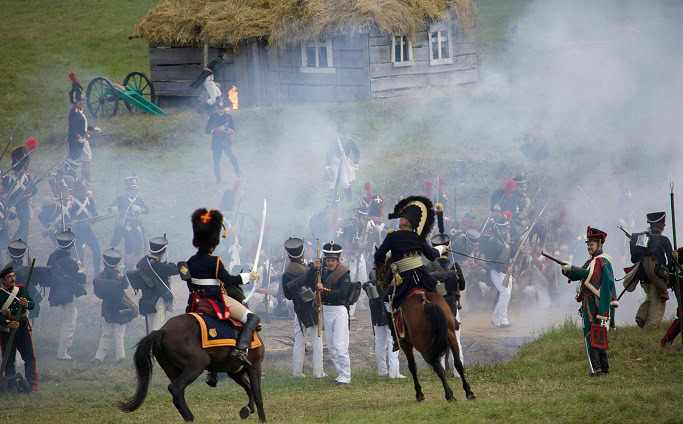War is not a modern phenomenon. Of course, we all know that. Yet, most of our perception of major conflicts is shaped by the 20th century. The first half of the 20th century unleashed the horrors of total war and mass mobilization, which we have not yet experienced again. And the latter half of the 20th century taught us of the more complex, ideological conflicts that moved away from battlefields.
Yet, we can argue that modern warfare was born in the 19th century when major conflicts set in motion many of the strategies and tactics that have been adopted today. Thankfully, the nearest most of us get to these types of conflicts today is by reliving them through war movies or employing tactics in war and strategy games. But you can trace back so much of what we consider as war to the 19th century, even if the subsequent century underlined it.
Of course, many of the major conflicts of the 19th century are instantly recognizable to modern audiences, both in their impact and their cost. Yet, many have been largely overlooked in Western history books. Below, we present 7 of the biggest wars of the 19th century, starting with one that had more casualties than the First World War.
*Please note that all casualties are estimates
1) Taiping Rebellion (1850–1864)
Combatants: Qing Dynasty vs. Taiping Heavenly Kingdom.
Estimated Casualties: 20-30 million people.
Rarely taught in the West, the Taiping Rebellion was a gruesome civil war in southern China that was led by Hong Xiuquan, who claimed to be the younger brother of Jesus. The rebellion aimed to overthrow the Qing Dynasty and establish a new Christian kingdom in China. It was one of the deadliest conflicts in history – with only the Second World War having more deaths.
2) Napoleonic Wars (1803–1815)
Combatants: France vs. Britain, Russia, Austria, Prussia, Spain, and others.
Estimated Casualties: 3.5-6 million people.
Most of us know the Napoleonic Wars, but it’s perhaps overlooked just how deadly and expansive they were. It was, in effect, a 12-year conflict that ripped the heart of Europe apart, leading to a devastating number of soldiers’ deaths. The conflict ended with Napoleon’s defeat at the Battle of Waterloo.
3) American Civil War (1861–1865)
Combatants: Union (Northern states) vs. Confederacy (Southern states).
Estimated Casualties: Approximately 620,000-750,000 people.
Perhaps the most studied conflict on this list, even if some of the causes and outcomes are contested today. The Civil War was fought over issues of slavery, states’ rights, and secession. The Union victory preserved the United States as a single nation and led to the abolition of slavery.
4) Crimean War (1853–1856)
Combatants: Russian Empire vs. Ottoman Empire, France, United Kingdom, and Sardinia.
Estimated Casualties: Around 500,000-1,000,000 people.
It is another war that people recognize, but most of us know little about. It was mostly fought on the Crimean Peninsula and stemmed from disputes over the rights of Christian minorities in the Holy Land, which was under Ottoman control. The war is noted for its brutal conditions and the ineffectiveness of traditional military tactics against modern weaponry. Alas, even today, the Crimean region cannot escape war and annexation.
5) War of the Triple Alliance (1864–1870)
Combatants: Paraguay vs. Argentina, Brazil, and Uruguay.
Estimated Casualties: Approximately 400,000-1,000,000 people.
One of the bloodiest wars in South American history, this conflict saw Paraguay fighting against an alliance of Argentina, Brazil, and Uruguay. The war resulted in significant loss of life and territory for Paraguay and had a profound impact on the region, basically shaping much of modern South America.
6) Franco-Prussian War (1870–1871)
Combatants: French Empire vs Prussia and its German allies.
Estimated Casualties: Around 180,000-700,000 people.
With famous historical figures – Kaiser Wilhelm, Bismarck, Napoleon III this conflict led to the conditions that would eventually lead to the First World War. The war resulted in the fall of the French Empire and the establishment of the German Empire.
7) Second Opium War (1856–1860)
Combatants: British Empire and French Empire vs. Qing Dynasty.
Estimated Casualties: Around 100,000-200,000 people.
Also known as the Arrow War, this conflict was fought to further open China to Western trade and influence following the First Opium War. The war led to the Treaty of Tientsin, which expanded trade rights and ceded territory to the Western powers, further weakening the Qing Dynasty and causing more pain in China.
